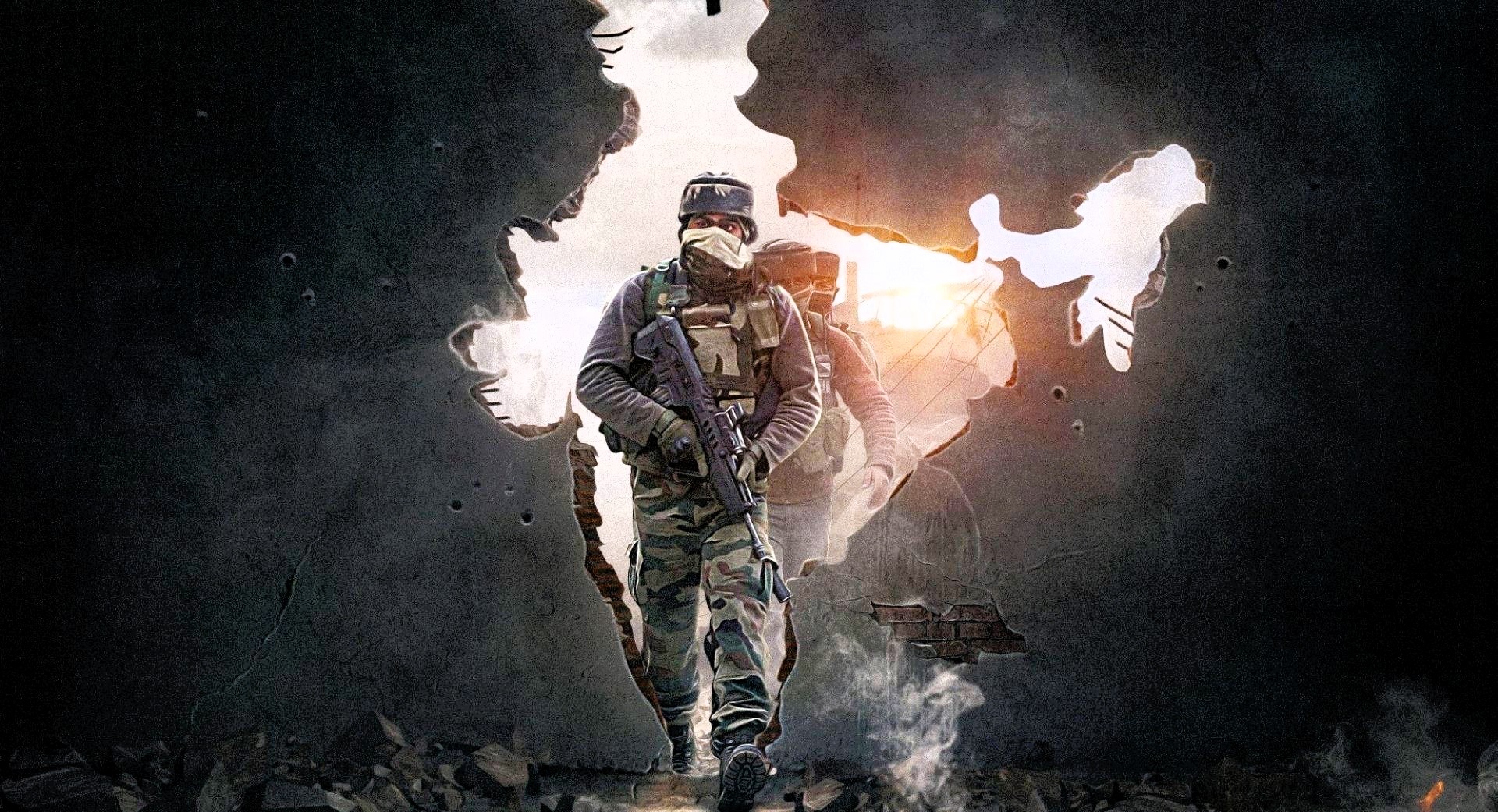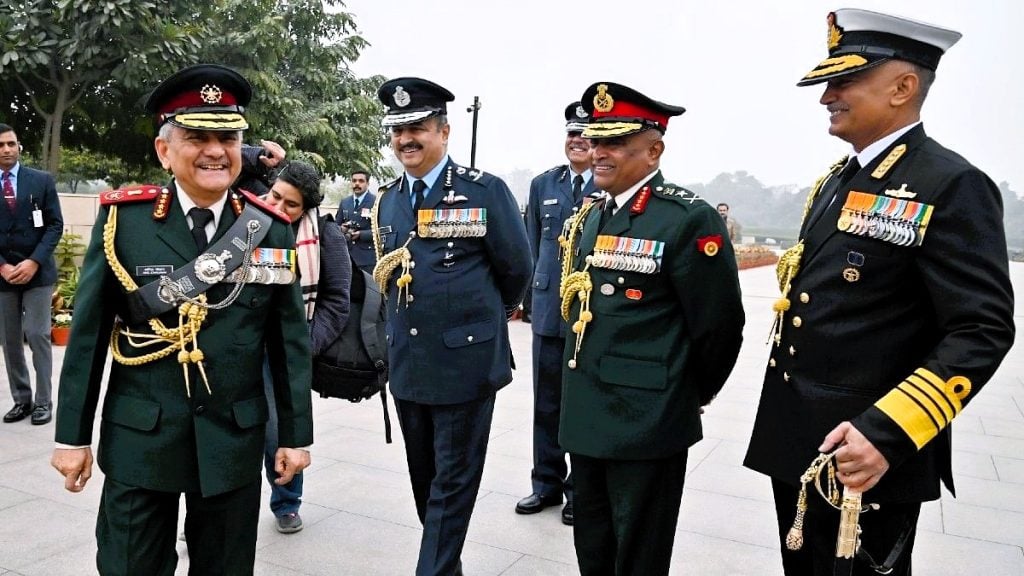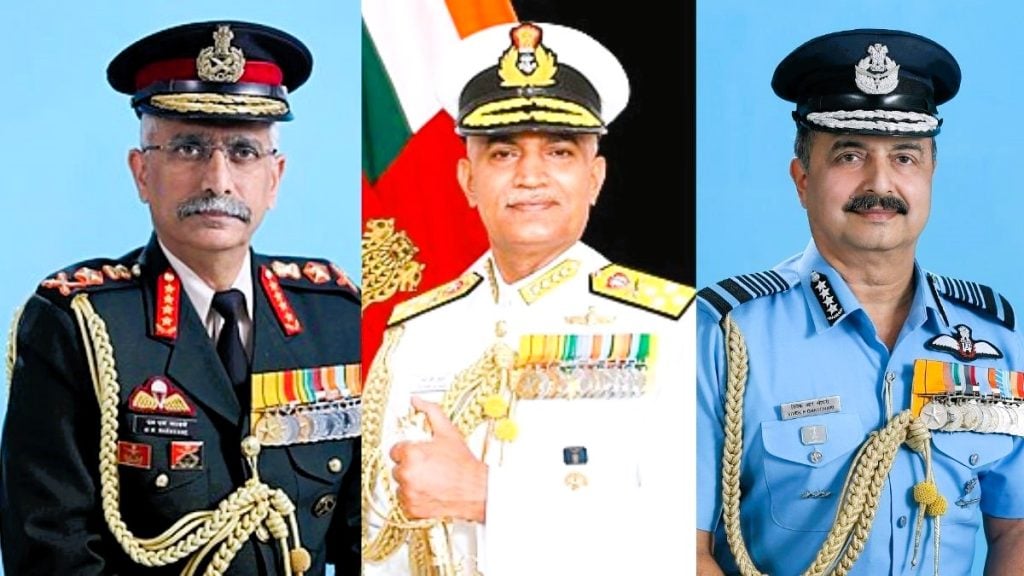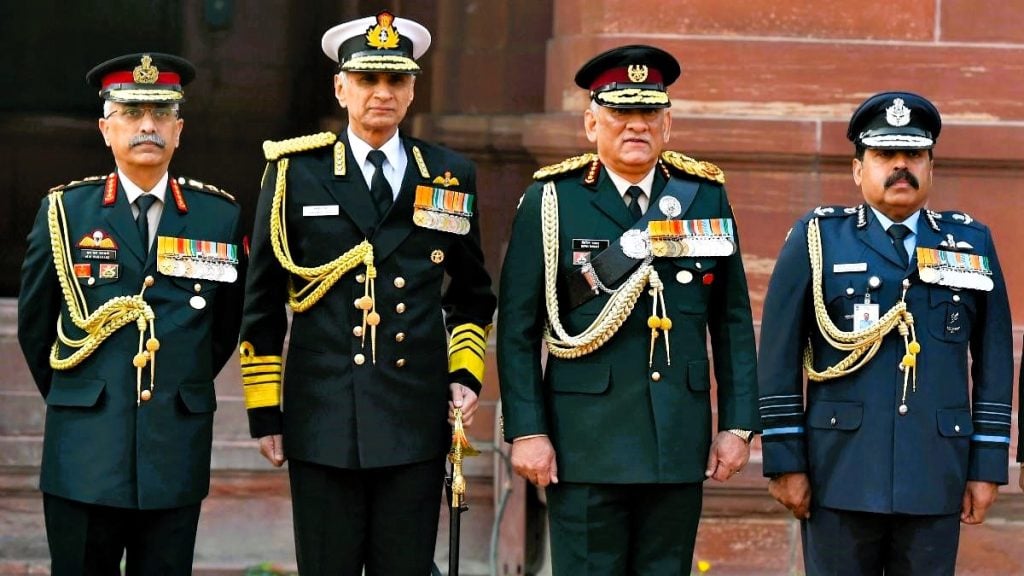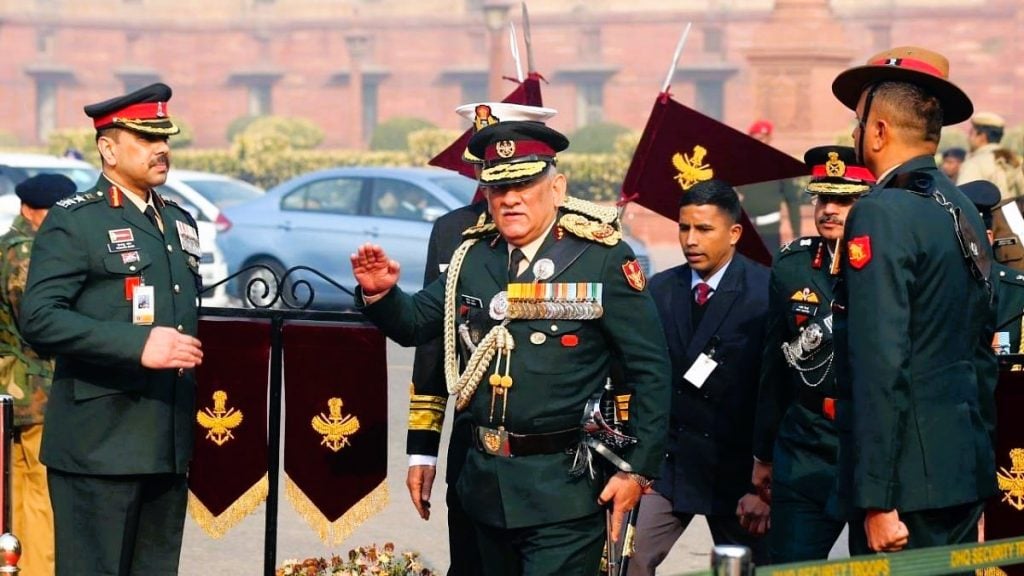The Indian civil and military services have long been intertwined, with officers from various backgrounds vying for leadership positions and recognition. Understanding the intricate system of rank equivalence across these domains is crucial for those aspiring to join the defense forces or the prestigious Indian Administrative Service (IAS). This comprehensive guide delves into the Equivalent Ranks of IAS, IPS and Armed Forces Officers, shedding light on the complex web of hierarchies and the factors that shape them.
Rank Equivalence: An Overview
At the outset, it’s important to recognize that the concept of rank equivalence is not as straightforward as it may seem. While pay scales, functions, and status are often used as the primary criteria for determining parity, the reality on the ground can be far more complex. Factors such as seniority, decision-making authority, and the unique responsibilities of each service can all contribute to the perceived status of an officer.
The 7th Central Pay Commission’s Recommendations
The 7th Central Pay Commission (CPC) attempted to establish a clear framework for rank equivalence between the Tri-Services, Civil Services, and the Indian Police Service (IPS). The Commission’s recommendations, outlined in a detailed table, aimed to align the pay scales and designations across these diverse domains. However, as we shall explore, these equivalencies are not always reflective of the true status and influence wielded by officers in their respective roles.
Ranks across various services in India:
| CAPFs Ranks | Police Ranks | Army Ranks | Navy Ranks | Air Force Ranks | Coast Guard Ranks |
|---|---|---|---|---|---|
| Director General (Apex Scale of IPS) | C.P, Director General of a State Police Force | Lieutenant General (Army Commander’s Scale) | Vice Admiral (FOC-in-C’s Scale) | Air Marshal (AOC-in-C’s Scale) | Director General |
| Special Director General (HAG+ scale of IPS) | C.P, Special Director General | Lieutenant General (HAG+ Scale) | Vice Admiral (HAG+ Scale) | Air Marshal (HAG+ Scale) | Additional Director General (HAG+ Scale) |
| Additional Director General (HAG Scale of the IPS cadre, also available to BSF cadre) | C.P, ADG | Lieutenant General (HAG) | Vice Admiral (HAG) | Air Marshal (HAG) | Additional Director General (HAG Scale) |
| Inspector General | Joint C.P, IG | Major General | Rear Admiral | Air Vice Marshal | Inspector General |
| Deputy Inspector General | Additional C.P, DIG | Brigadier | Commodore | Air Commodore | Deputy Inspector General |
| Commandant | DCP (Selection grade)/SSP | Colonel | Captain | Group Captain | Commandant |
| 2 I/C | DCP (Jr grade)/SP | Lt. Colonel | Commander | Wing Commander | Commandant |
| Deputy Commandant | Addl. DCP/Addl. SP | Major | Lt. Commander | Sqn Leader | Deputy Commandant |
| Assistant Commandant | Assistant Commissioner of Police/Deputy Superintendent of Police | Captain | Lieutenant | Flight Lieutenant | Assistant Commandant |
With Levels
| Levels | RANK | RANK | RANK |
|---|---|---|---|
| 10 | Lieutenant | Assistant SP | Assistant Collector |
| 10A | Captain | Addl. SP | Sub Collector |
| 11 | Major | SP | Collector |
| 12/12A | Lt. Colonel | SP | – |
| 13 | Colonel | SP | Collector (selection grade) |
| 13A | Brigadier | DIG | – |
| 14 | Major General | IG | Secretary (state govt.) |
| 15 | Lt. Gen (HAG) | ADGP | Principal Secretary (state govt.) |
| 16 | Lt. Gen (Corps Commander) | DG (HAG+) | Addl. Chief Secretary / Spl. Chief Secretary |
| 17 | Lt. Gen (Army Commander) | DGP (HoPF) | Chief Secretary |
| 18 | General | – | Cabinet Secretary |
The Disconnect Between Pay and Status
One of the key issues highlighted in the reference material is the discrepancy between pay scale and actual status. While defense officers may enjoy a higher monetary compensation due to the Military Service Pay (MSP), this does not necessarily translate to a commensurate level of authority or recognition when compared to their civil service counterparts. This disconnect has been a source of ongoing contention, with the defense forces voicing their concerns over the perceived downgrading of their rank status.
How & What to Practice before Your SSB Interview
The Order of Precedence
To address this disconnect, it is essential to look beyond the pay scale and consider the Order of Precedence, which is widely recognized as a more accurate representation of the relative status of various office holders. This comprehensive hierarchy, spanning from the President of India to the Members of Parliament, provides a clearer picture of the true pecking order and the respect and deference accorded to each position.
Understanding the Order of Precedence
The Order of Precedence is a meticulously crafted document that outlines the precise ranking of officials, from the highest to the lowest. It serves as a guiding principle for protocol and etiquette, ensuring that individuals are accorded the appropriate level of respect and recognition. By delving into the nuances of this order, we can gain a deeper understanding of the true equivalence between the ranks of IAS, IPS, and the Armed Forces.
| Rank | Officer |
|---|---|
| 1 | President |
| 2 | Vice-President |
| 3 | Prime Minister |
| 4 | Governors of States |
| 5 | Former Presidents |
| 5A | Deputy Prime Minister |
| 6 | Chief Justice, Speaker of the Lok Sabha |
| 7 | Cabinet Ministers of the Union, Chief Ministers of States, Deputy Chairman of the NITI Aayog, Former Prime Ministers, Leaders of the Opposition in the Rajya Sabha and the Lok Sabha |
| 7A | Holders of the Bharat Ratna |
| 8 | Ambassadors Extraordinary and Plenipotentiary and the High Commissioners of Commonwealth countries accredited to India, Chief Ministers of States (when outside their respective States), Governors of States (when outside their respective States) |
| 9 | Judges of the Supreme Court of India |
| 9A | Chairman, Union Public Service Commission, Chief Election Commissioner, Comptroller and Auditor General |
| 10 | Deputy Chairman of the Rajya Sabha, Deputy Chief Ministers of States, Deputy Speaker of the Lok Sabha, Members of the NITI Aayog, Ministers of States of the Union |
| 11 | Lieutenants Governor of Union Territories (within their respective Union Territories), Attorney General, Cabinet Secretary |
| 12 | Chiefs of Staff holding the rank of full General or equivalent rank |
| 13 | Envoys Extraordinary and Ministers Plenipotentiary accredited to India |
| 14 | Chief Justices of States, Chairmen and Speakers of State Legislatures (within their respective States) |
| 15 | Chief Ministers of Union Territories (within their respective Union Territories), Cabinet Ministers in States (within their respective States), Chief Executive Councillor of Delhi (within their respective Union Territories), Deputy Ministers of the Union |
| 16 | Officiating Chiefs of Staff holding the rank of Lieutenant-General or equivalent rank |
| 17 | Judges of High Courts, Chairman, Central Administrative Tribunal, Chairman, Minorities Commission, Chairman, Scheduled Castes and Scheduled Tribes Commission |
| 18 | Cabinet Ministers in States (outside their respective States), Chairmen and Speakers of State Legislatures (outside their respective States), Chairman, Monopolies and Restrictive Trade Practices Commission, Deputy Chairmen and Deputy Speakers of State Legislatures (within their respective States), Ministers of State in States (within their respective States), Ministers of Union Territories and Executive Councillors of Delhi (within their respective Union Territories), Speakers of Legislative Assemblies in Union Territories, Chairman of Delhi Metropolitan Council (within their respective Union Territories) |
| 19 | Chief Commissioners of Union Territories not having Councils of Ministers (within their respective Union Territories), Deputy Ministers in States (within their respective States), Deputy Speakers of Legislative Assemblies in Union Territories, Deputy Chairman of Delhi Metropolitan Council (within their respective Union Territories) |
| 20 | Deputy Chairmen and Deputy Speakers of State Legislatures (outside their respective States), Ministers of State in States (outside their respective State) |
| 21 | Members of Parliament |
| 22 | Deputy Ministers in States (outside their respective States) |
| 23 | Secretaries to Government of India, Army Commanders/Vice Chief of the Army Staff or equivalent in other Services, Chief Secretaries to State Governments (within their respective States), Commissioner for Linguistic Minorities, Commissioner for Scheduled Castes and Scheduled Tribes, Members, Minorities Commission, Members, Scheduled Castes and Scheduled Tribes Commission, Officers of the rank of full General or equivalent rank, Secretary, Minorities Commission, Secretary, Scheduled Castes and Scheduled Tribes Commission, Secretary to the President, Secretary to the Prime Minister, Secretary, Rajya Sabha/Lok Sabha, Solicitor General, Vice-Chairman, Central Administrative Tribunal |
| 24 | Lieutenant Generals, Air Marshals, Vice Admirals |
| 25 | Additional Secretaries to Government of India, Advocate Generals of States, Additional Solicitor Generals, Chairman, Tariff Commission, Charge Affairs and Acting High Commissioners a pied and ad. interim, Chief Ministers of Union Territories (outside their respective Union Territories), Chief Executive Councillor of Delhi (outside their respective Union Territories), Chief Secretaries of State Governments (outside their respective States), Deputy Comptroller and Auditor General, Deputy Speakers of Legislative Assemblies in Union Territories, Chairman of Delhi Metropolitan Council (outside their respective Union Territories), Deputy Chairman of Delhi Metropolitan Council (outside their respective Union Territories), Director of the Intelligence Bureau, Director, Central Bureau of Investigation, Director-General, Border Security Force, Director-General, Central Reserve Police Force, Lieutenants Governor of Union Territories (outside their respective Union Territories), Members, Central Administrative Tribunal, Members, Monopolies and Restrictive Trade Practices Commission, Members, Union Public Service Commission, Ministers of Union Territories and Executives Councillors of Delhi, Principal Staff Officers of the Armed Forces of the rank of Major General or equivalent rank, Speakers of Legislative Assemblies in Union Territories |
| 26 | Joint Secretaries to Government of India, Major Generals, Rear Admirals, Air Vice Marshals |
The Precedence of the Armed Forces
Within the Order of Precedence, the Armed Forces hold a prominent position, with the Chiefs of Staff and officers of the rank of full General or equivalent commanding a high level of respect and deference. This recognition reflects the crucial role played by the defense forces in safeguarding the nation’s sovereignty and the unique challenges they face in the line of duty.
The Primacy of the Civil Services
While the Armed Forces enjoy a significant status, the civil services, particularly the IAS, hold a distinct advantage in the Order of Precedence. The Cabinet Secretary, the highest-ranking civil servant, is placed above the General of the Indian Army, underscoring the primacy of the administrative bureaucracy in the overall governance structure.
GTO Tasks in SSB Interview: Types, Skills, and Preparation Tips
The Delicate Balance of Power
The interplay between the civil and military services is a delicate balance, with each side vying for greater recognition and influence. This dynamic is further complicated by the fact that the Order of Precedence is not merely a symbolic construct but a practical tool that guides protocol and decision-making processes within the government.
The Implications for Aspiring Officers
For those aspiring to join the defense forces or the civil services, understanding the nuances of Equivalent Ranks among IAS, IPS, and Armed Forces officers and the Order of Precedence is crucial. It not only provides valuable insight into the hierarchical structure but also helps candidates navigate the complex landscape of career progression and the potential challenges they may face in terms of status and recognition.
The Evolving Landscape and Future Considerations
As the Indian governance landscape continues to evolve, the issue of Equivalent Ranks among IAS, IPS, and Armed Forces officers is likely to remain a topic of ongoing debate and discussion. With changing societal dynamics, the role and influence of various services may shift, necessitating a re-evaluation of the existing frameworks. Aspiring officers must stay attuned to these developments and be prepared to adapt to the changing landscape.
Conclusion
In conclusion, the understanding of Equivalent Ranks among IAS, IPS, and Armed Forces officers is a multifaceted and nuanced topic. While pay scales and designations provide a starting point, the true measure of status and influence lies in the intricate Order of Precedence. By embracing the complexity of this system and the underlying factors that shape it, aspiring officers can better navigate the path to successful careers in the service of the nation.
FAQs
1. Which rank in the Army is equal to IAS?
Although an IAS officer with 14 years of service is not equivalent in status to a Major General, only those IAS officers in the super time scale, who are empanelled and hold the position of Joint Secretary to the Government of India, can be compared to a Major General. However, the monetary package for IAS officers with 14 years of service matches that of Major Generals.
2. What is the rank of IPS vs IAS?
The IAS is regarded as the highest position among all administrative services, with the IPS ranking second.
3. Who has more power, IPS or Army officer?
An IPS officer holds a higher rank than a Lieutenant in the Army.
4. Can IPS join armed forces?
Therefore, the requirements for IPS and Army officers are quite different. Qualifying for the IPS does not grant eligibility to join the officer ranks of the Armed Forces, and similarly, qualifying through the SSB does not allow one to join police forces like the IPS.
5. Can Army officers become IAS?
Yes, Army officers can apply for the IAS by taking the Civil Services Examination conducted by the Union Public Service Commission (UPSC).
